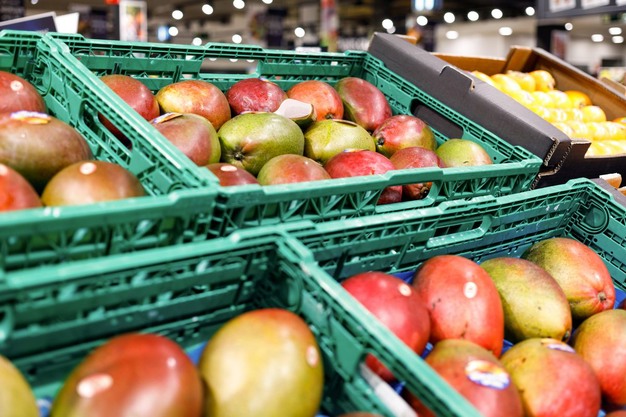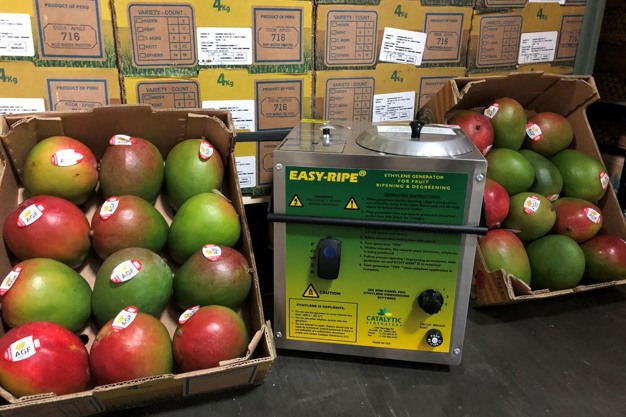In recent years, the pre-conditioning and ripening of fruits have proven to drive consumption and sales. This is a more recent way of thinking that is in contrast with the past when retailers focused on the longest shelf-life possible to avoid waste, save on costs, and make the most sales. “Nowadays, data shows that the expense of an ethylene ripening program to provide consumers with ripe, ready-to-eat fruit will help increase sales tremendously,” says Greg Akins, President & CEO of Catalytic Generators.
Better ripening and uniformity
With the help of ethylene, many fruits will ripen in the same manner after harvest as they would on the plant. In fact, some will ripen better off the plant, with the help of external ethylene, like bananas and avocados. The reason is that the external source of ethylene in the ripening room triggers the fruit to release its own ethylene. “It results in better ripening and uniformity, but it also makes the readiness to market more predictable. Consumers can rely on being able to purchase ready-to-eat fruit. For this reason, avocados, bananas, and field-grown tomatoes are by far the most popular fruits to be ripened with ethylene,” said Akins. “However, there is ample opportunity for other fruits to take advantage of a ripening program.”

Mango display. Source: Dreamstime.
Consumer satisfaction and repeat purchases
One fruit variety that is increasingly being ripened with ethylene is mango. The University of California Davis conducted in-store consumer tests on behalf of the National Mango Board indicating that consumer acceptance doubles, increasing from approximately 39 percent for mature/unripe mangos to 87 percent for the same fruit when it’s ripe and ready to eat. “Uniform ripening results in higher consumer satisfaction, more repeat purchases, and customers buying larger quantities,” said Akins. “Customer satisfaction and repeat sales are the biggest reasons for retailers to shift to pre-conditioning.”
For ethylene ripening to be successful, it is critical for mangos to be harvested mature. Fruit that was harvested immature will soften but won’t develop a pleasing flavor and satisfactory eating quality. During ripening, mangos undergo several significant changes: their firmness decreases, and fruit sugars increase while acidity and starch concentrations decrease. Internal flesh color will also develop from pale yellow to deep golden yellow. Maturity at harvest and throughout the ripening process can be judged by a combination of factors, including flesh color, firmness, dry matter, and fruit shoulder shape.
“We believe the additional time, effort and minimal investment involved in ripening mangos provides the best quality fruit and customer satisfaction,” commented Akins.

Fruit Logistica
Catalytic’s ethylene generators are being used by customers all over the world. From February 7 – 9, the company will be present at Fruit Logistica Berlin and available to meet with (potential) customers face to face. Catalytic Generators will be co-exhibiting with Interko and Fresh Produce Instruments in Hall 1.2, stand D-40.
 For more information:
For more information:
Greg Akins
Catalytic Generators
Tel: +1 (757) 855-0191
info@catalyticgenerators.com
www.catalyticgenerators.com
